Modules:GrayscaleGrindPeak-Documentation-3.6
Return to Slicer 3.6 Documentation
Module Name
GrayscaleGrindPeak
General Information
Module Type & Category
Type: CLI
Category: Filtering/Morphology
Authors, Collaborators & Contact
- Author: Bill Lorensen
- Contact: bill.lorensen at gmail.com
Module Description
GrayscaleGrindPeakImageFilter removes peaks in a grayscale image. Peaks are local maxima in the grayscale topography that are not connected to boundaries of the image. Gray level values adjacent to a peak are extrapolated through the peak. This filter is used to smooth over local maxima without affecting the values of local minima. If you take the difference between the output of this filter and the original image (and perhaps threshold the difference above a small value), you'll obtain a map of the local maxima. This filter uses the GrayscaleGeodesicDilateImageFilter. It provides its own input as the 'mask' input to the geodesic erosion. The 'marker' image for the geodesic erosion is constructed such that boundary pixels match the boundary pixels of the input image and the interior pixels are set to the minimum pixel value in the input image. This filter is the dual to the GrayscaleFillholeImageFilter which implements the Fillhole algorithm. Since it is a dual, it is somewhat superfluous but is provided as a convenience. Geodesic morphology and the Fillhole algorithm is described in Chapter 6 of Pierre Soille's book 'Morphological Image Analysis: Principles and Applications', Second Edition, Springer, 2003. A companion filter, Grayscale Fill Hole, fills holes in grayscale images.
Usage
GrayscaleGrindPeakImageFilter.exe [--returnparameterfile <std::string>] [--processinformationaddress <std::string>] [--xml] [--echo] [--] [--version] [-h] <std::string> <std::string> Where:
--returnparameterfile <std::string>
Filename in which to write simple return parameters (int, float,
int-vector, etc.) as opposed to bulk return parameters (image,
geometry, transform, measurement, table).
--processinformationaddress <std::string>
Address of a structure to store process information (progress, abort,
etc.). (default: 0)
--xml
Produce xml description of command line arguments (default: 0)
--echo
Echo the command line arguments (default: 0)
--, --ignore_rest
Ignores the rest of the labeled arguments following this flag.
--version
Displays version information and exits.
-h, --help
Displays usage information and exits.
<std::string>
(required) Input volume to be filtered
<std::string>
(required) Output filtered
Development
Usability issues
Follow this link to the Slicer3 bug tracker. Please select the usability issue category when browsing or contributing.
Source code & documentation
Source Code: [1]
Documentation:
More Information
Acknowledgment
This work is part of the National Alliance for Medical Image Computing (NAMIC), funded by the National Institutes of Health through the NIH Roadmap for Medical Research, Grant U54 EB005149. Information on the National Centers for Biomedical Computing can be obtained from National Centers for Biomedical Computing.
